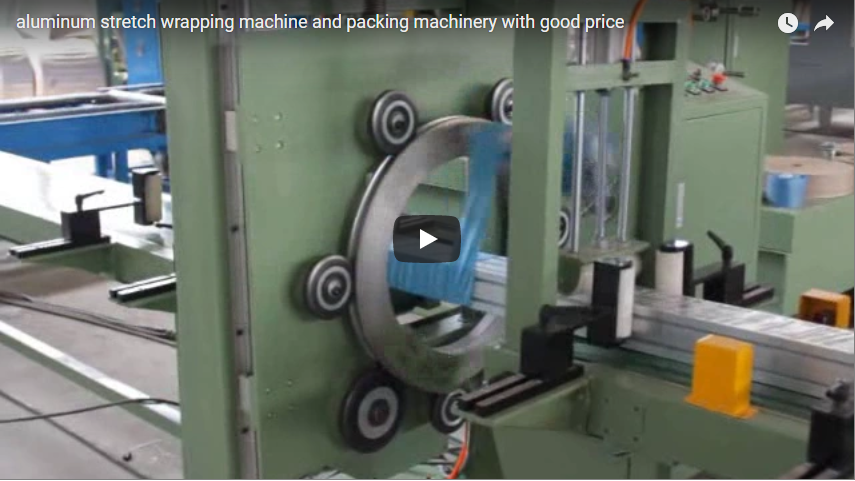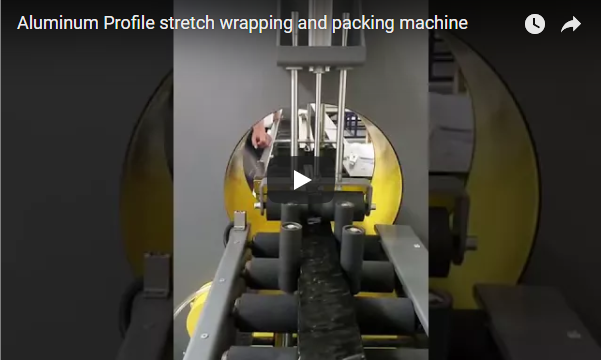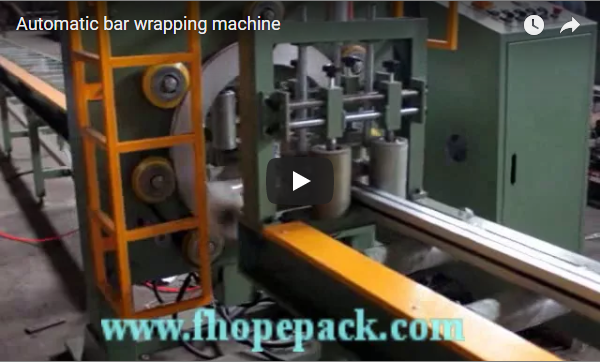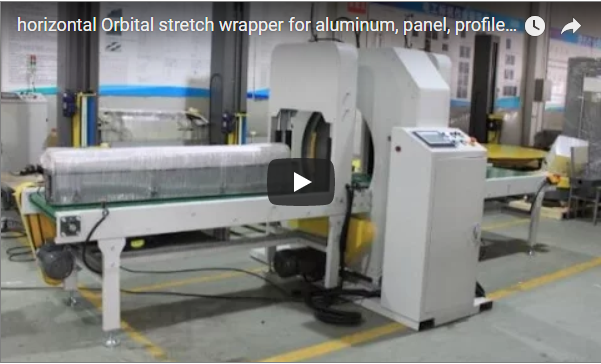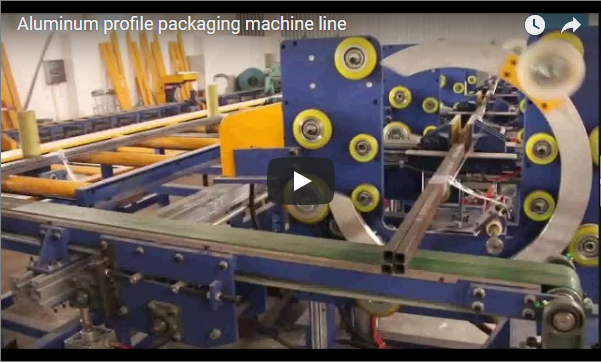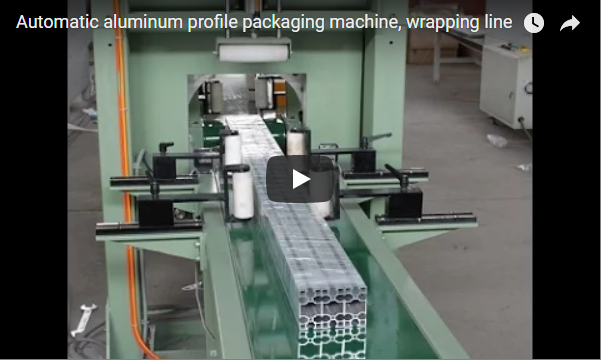Streamlining Operations: A Deep Dive into the Automated Aluminum Profile Packaging Machine Line
Aluminum extrusion profiles are essential components in construction, automotive, and industrial applications. However, their journey from the extrusion press to the end-user is fraught with potential hazards – scratches, dents, corrosion, and handling damage. Traditional manual packaging methods are often labor-intensive, inconsistent, and fail to provide adequate protection. For fabricators and manufacturers looking to enhance efficiency, reduce costs, and ensure product integrity, investing in an automated aluminum profile packaging machine line is a critical step forward.
This article explores the components, benefits, and considerations of a modern, high-performance packaging line specifically designed for aluminum and similar metal profiles.
This Fhopepack automated system demonstrates a fast, high-performance, and multi-functional approach to profile packaging. Let's break down the key stages involved:
1. Automatic Profile Banding Station
- Function: This initial stage typically involves securing a small number of profiles together or applying protective materials at specific points.
- Process: Profiles are fed into the station, where an automated strapping or banding unit applies plastic (PP or PET) or paper bands at pre-set intervals.
- Benefits: Provides initial stability for downstream processes, prevents individual profiles from shifting, and can apply protective strips to critical surfaces. From experience, ensuring correct band tension is crucial here to avoid profile deformation while maintaining bundle integrity.
2. Automatic Profile Wrapping Unit
- Function: Encases individual profiles or small, banded bundles in a protective layer of film.
- Process: This station commonly employs either shrink wrapping (using heat to conform the film tightly) or stretch wrapping (stretching film around the profiles). The choice depends on the level of protection needed and desired aesthetic.
- Benefits: Offers excellent protection against surface scratches, dust, and moisture. Stretch wrapping provides good containment, while shrink wrapping offers a tighter, more conformal fit. This stage significantly reduces the minor surface blemishes often seen with manual handling.
3. Automatic Bundle Making System
- Function: Consolidates multiple individually wrapped or banded profiles/small bundles into a larger, master bundle suitable for handling and shipping.
- Process: Profiles are automatically conveyed, stacked, or arranged according to a pre-programmed pattern (e.g., square, rectangular, hexagonal). Robotic arms or pusher mechanisms precisely position the profiles.
- Benefits: Creates stable, consistently sized larger units, optimizing storage space and facilitating efficient handling with forklifts or cranes. Eliminates the variability and potential ergonomic issues of manual stacking.
4. Automatic Orbital Wrapping for Master Bundles
- Function: Applies a final layer of stretch film around the entire consolidated master bundle for ultimate security and weather protection.
- Process: The master bundle passes through a ring-shaped dispenser (orbital wrapper) that revolves around the bundle, applying stretch film under tension. The bundle may rotate or move linearly through the ring.
- Benefits: Provides exceptional load stability, secures the entire bundle tightly, offers significant protection against environmental factors during transport and outdoor storage, and deters tampering. We've seen this stage dramatically reduce shipping damage claims for clients dealing with long-distance or multi-modal transport.
Key Technical Specifications & Considerations
When evaluating such a line, consider these parameters:
- Profile Dimensions: Minimum and maximum length, width, and height the machine can handle.
- Bundle Size & Weight: Maximum dimensions (L x W x H) and weight capacity for the final master bundle.
- Wrapping Materials: Compatible film types (PE stretch, shrink film, VCI film), gauges, and roll specifications.
- Throughput/Speed: Rated capacity in profiles per minute, bundles per hour, or meters per minute, depending on the bottleneck station.
- Control System: Typically PLC-based (e.g., Siemens, Allen-Bradley) with an HMI (Human-Machine Interface) for parameter setting, diagnostics, and operation.
- Power & Air Requirements: Voltage, phase, frequency, and compressed air consumption (pressure and volume).
- Footprint & Layout: Required floor space and integration possibilities with existing extrusion handling or warehouse systems.
Operational Advantages of Automation
Investing in an automated profile packaging line delivers tangible benefits:
- Enhanced Efficiency: Significantly higher throughput compared to manual methods, reducing packaging bottlenecks.
- Reduced Labor Costs: Frees up personnel from repetitive, labor-intensive tasks for more value-added activities.
- Improved Product Protection: Consistent application of protective materials minimizes scratches, abrasion, and weather damage.
- Packaging Consistency: Ensures every bundle meets the same quality standard, enhancing brand perception.
- Material Optimization: Automated systems often use materials more efficiently than manual wrapping, reducing waste.
- Enhanced Safety: Reduces risks associated with manual lifting, handling sharp edges, and repetitive motions.
Customization and Integration
While the core stages described are common, these packaging lines are rarely "off-the-shelf." Effective solutions are tailored to specific needs:
- Modularity: Lines can often be configured with only the necessary stations (e.g., skipping initial banding if profiles are directly wrapped).
- Profile Complexity: Systems can be adapted for various profile shapes, including hollows, complex geometries, and varying lengths.
- Integration: Seamless integration with upstream cooling tables, saws, and downstream warehousing systems (conveyors, AGVs) is crucial for maximizing overall plant efficiency.
- Ancillaries: Options like automatic labeling, weighing stations, or integration with ERP/MES systems can be incorporated.
The flexibility to adapt the solution to specific production requirements and packaging goals is paramount. Discussing your unique profile types, desired protection levels, and throughput needs with the machinery provider is essential.
In conclusion, the transition from manual or semi-automatic profile packaging to a fully automated line represents a significant upgrade for aluminum extruders and fabricators. By integrating stages like automatic banding, wrapping, bundle making, and orbital wrapping, manufacturers can achieve substantial improvements in speed, consistency, product protection, and operational cost-effectiveness, ultimately strengthening their competitive position in the market.
Back to front page: https://www.fhopepack.com/Aluminum/

